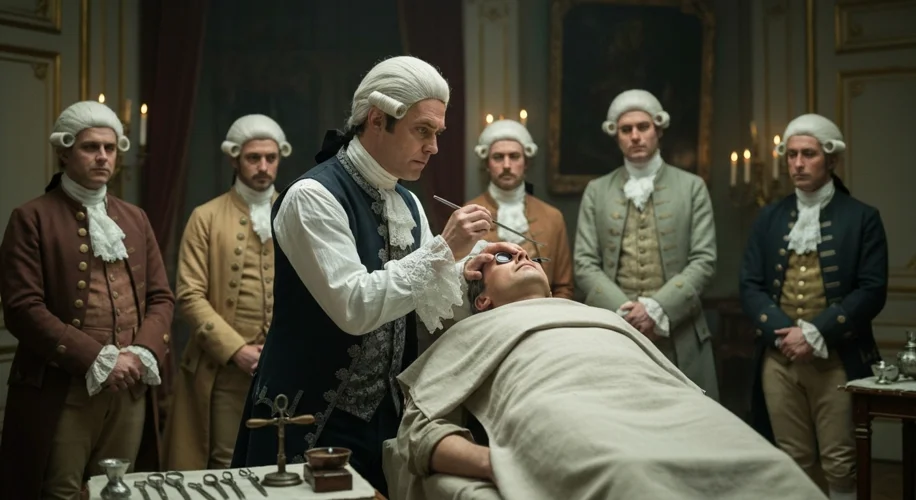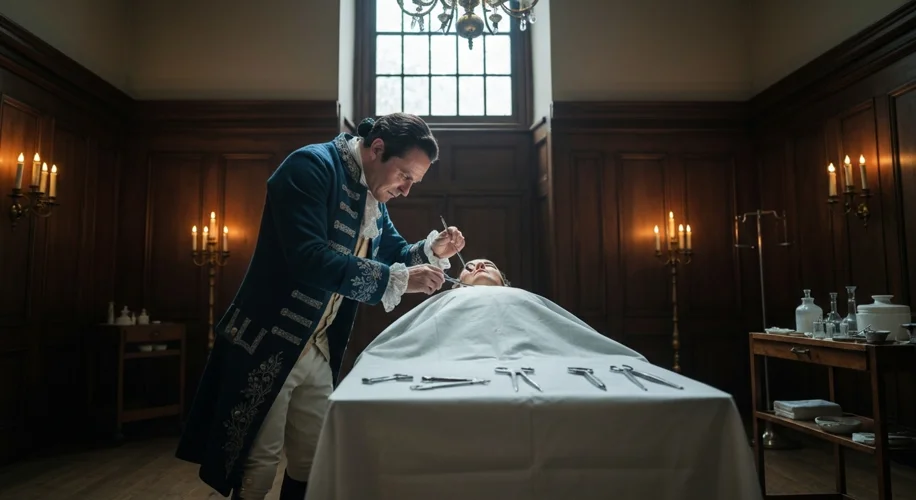In the dimly lit operating rooms of 18th-century France, a persistent darkness threatened to steal the vibrant tapestry of life for thousands. Blindness, often caused by cataracts – the clouding of the eye’s lens – was a sentence of isolation, condemning individuals to a world devoid of color and connection. Yet, amidst this despair, one man’s vision and unwavering resolve began to illuminate a path toward sight restoration, heralding a new era in medical history. His name was Jacques Daviel.
Born in 1693 in the French countryside, Daviel’s early life gave little hint of the groundbreaking surgeon he would become. He apprenticed as a barber-surgeon, a common path for medical practitioners of the time, combining the skills of haircutting and shaving with rudimentary surgical procedures. However, Daviel possessed an insatiable curiosity and a deep empathy for those suffering. He eventually pursued more formal medical training, eventually specializing in ophthalmology, a field that, in the 1700s, was fraught with more superstition and ineffective treatments than genuine cures.
At the time, cataracts were viewed by many as an incurable affliction. The prevailing medical understanding was limited, and the treatments offered were often brutal and ineffective. Some physicians attempted to purge the body of supposed humors, while others used crude instruments to dislodge the clouded lens, often causing more harm than good. The common belief was that the cataract was a thick fluid obscuring vision, and the goal was to move it out of the way. These methods, when they didn’t fail entirely, frequently led to infection, further vision loss, or even death.
Daviel, however, was not content with the status quo. He meticulously observed the eyes of patients, studied existing anatomical texts, and experimented with different approaches. He recognized that the opacity was within the lens itself, not a substance to be merely pushed aside. His revolutionary idea was to physically remove the clouded lens. This concept was radical, bordering on heretical, for its time. Imagine the sheer courage required to attempt such a procedure when the prevailing wisdom dictated otherwise.

In 1745, after years of careful study and private practice, Jacques Daviel performed his first successful cataract extraction. He developed a specialized, slender instrument with a slight curve, designed to gently grasp the lens and extract it through a precisely made incision in the cornea. This was not a bloodless or painless procedure, and the risks of infection and complications were still considerable. Yet, Daviel’s technique marked a monumental shift. He was not just manipulating the cataract; he was removing the diseased tissue, offering a genuine chance for sight.
His success was not immediate or universally acclaimed. Many in the medical establishment were skeptical, fearing the implications of such an invasive procedure. However, the undeniable results spoke for themselves. Patients who had lived in darkness for years began to see again. News of Daviel’s “operation of the cataract” spread, and people traveled from across Europe, seeking his expertise. He documented his cases meticulously, publishing his findings and demystifying the process, encouraging other surgeons to adopt his methods.
One of his most famous cases was that of Madame de Roucoulle, a woman of considerable social standing, whose sight had been failing for years due to cataracts. Daviel successfully operated on her, restoring her vision. This high-profile success lent significant credibility to his work and further fueled the demand for his services.
Daviel’s impact extended far beyond the immediate restoration of sight. His pioneering work laid the foundation for modern cataract surgery. He demonstrated the importance of meticulous technique, specialized instruments, and the necessity of removing the diseased lens rather than merely repositioning it. His courage in challenging established medical dogma opened the door for countless other innovations in ophthalmology and surgery in general.
While the instruments and techniques have evolved dramatically since Daviel’s time, the fundamental principle of removing a clouded lens to restore vision remains the same. Jacques Daviel, the barber-surgeon from Normandy, gifted the world the ability to see again, proving that even in the face of deeply entrenched beliefs, one individual’s dedication to alleviating suffering can indeed change the world, one restored pair of eyes at a time.

